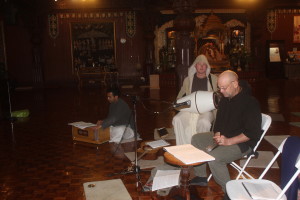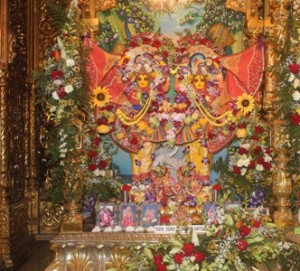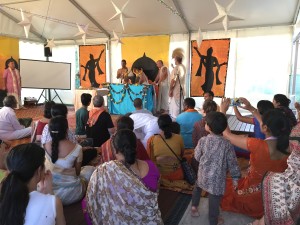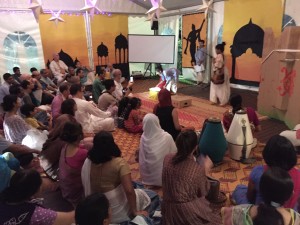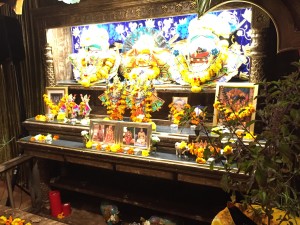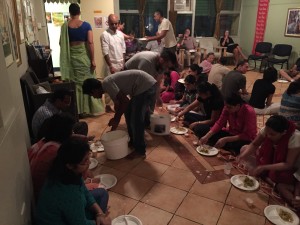by Lilasuka dasi
The New Vrindaban 2015 Gaura Purnima festival on March 5 was very special. It is said that “You can’t buy a ticket to Vrindavan – you have to be invited by Srimati Radharani Herself.” It seems that Sri Sri Radha Vrindaban Chandra of New Vrindaban gave out special mercy invitations to those who braved sub-zero temperatures and seven-inch deep snow drifts to come from Pittsburgh and surrounding towns to see Sri Sri Gaura Nitai on this Gaura Purnima day. The snow-covered roads and the trees lining the roads of the dhama were a milky scene from a winter dreamland.
Despite the extreme snow, Lord Caitanya Mahaprabhu spread out His golden rays of mercy and warmed the hearts of the souls attending the celebration. In the early morning, a few people had the good fortune to attend Malati Prabhu’s uplifting class on Lord Caitanya. Sweet, soft bhajans began early in the afternoon, when a few more stalwarts drifted into the temple room. Then, Sankirtan prabhu gave his slide presentation of “How the Hare Krsna Mantra Came to the West” to a slightly growing crowd. This was followed by the beautiful abhishek of little Gaura Nitai, where a steady stream of devotees took their turns bathing the deities at the front of the altar with great reverence.
Varsana Maharaja’s class was well attended as he held everyone’s attention with the pastimes that flowed from his mouth. The evening kirtan exploded with all the devotees’ exuberation and enthusiasm. We finished the day with a sumptuous Gaura Purnima feast.
An added bonus to the significance of the day is that we were fortunate enough to get a live phone interview on a local radio station, WKKX, a few days before the “Rising Moon Gaura Purnima Festival”. The interviewer had been to the Palace of Gold before and he was very interested in letting the people of the local Ohio Valley know about this special celebration in honor of the founder of kirtan, Sri Caitanya Mahaprabhu. All in all, Gaura Purnima 2015 was a smashing success.

